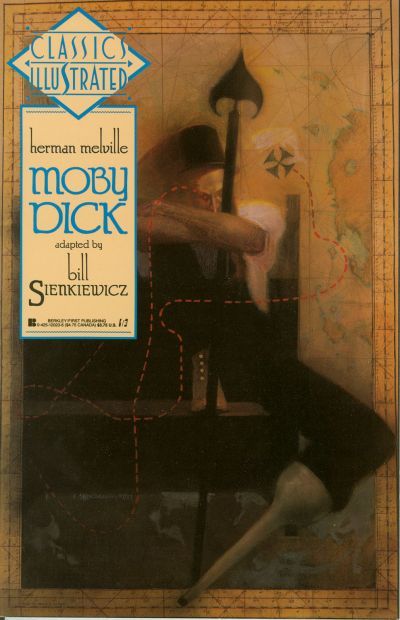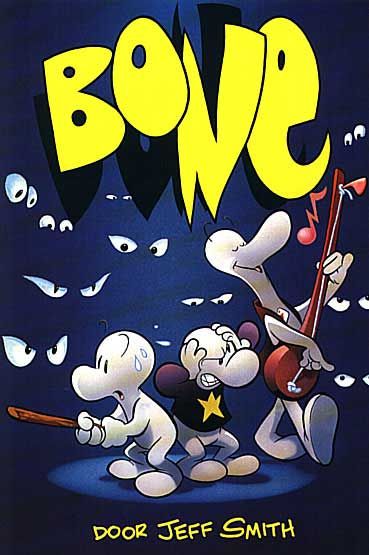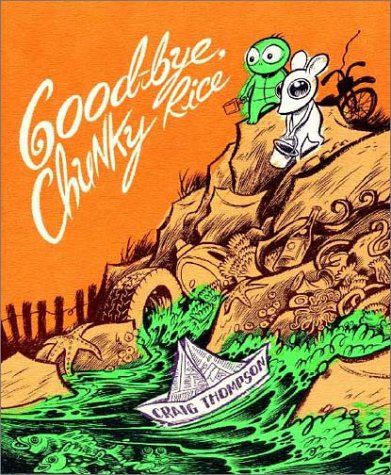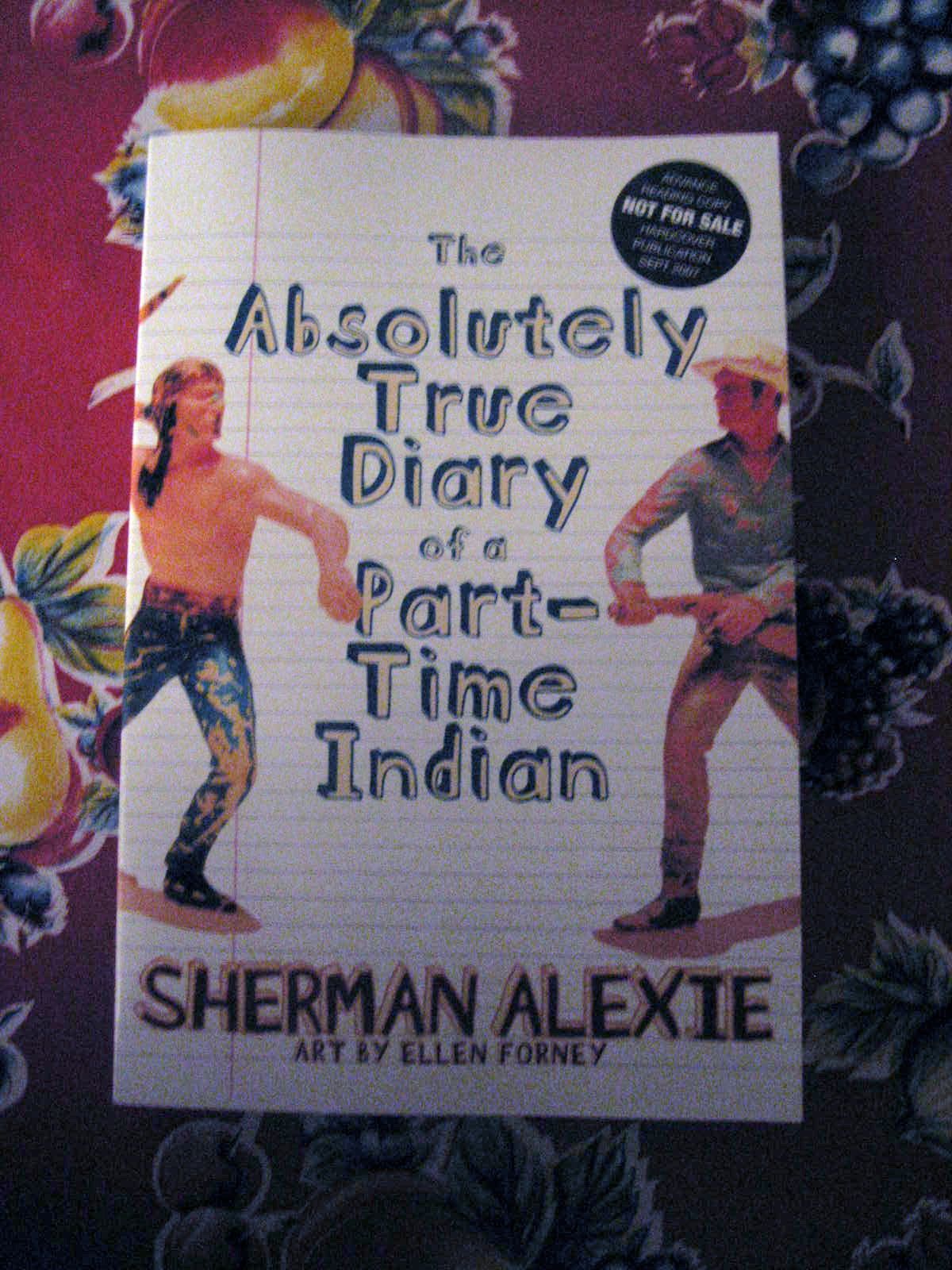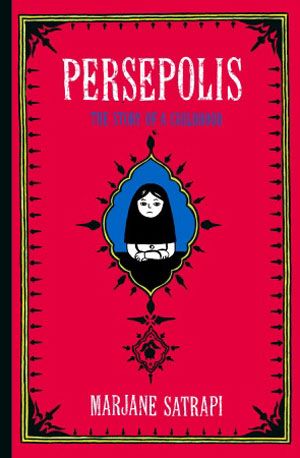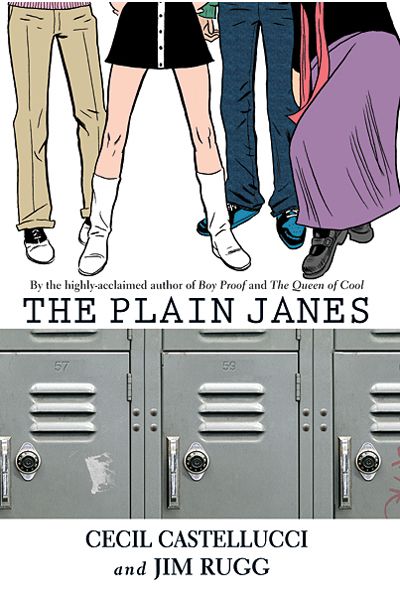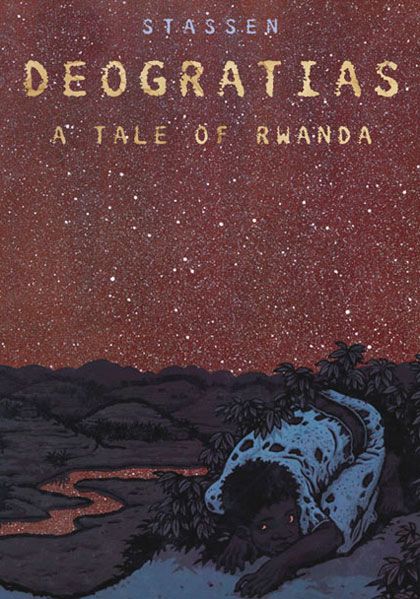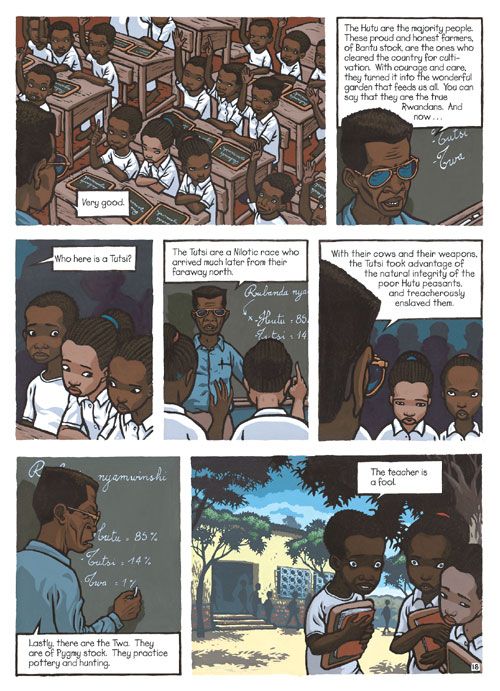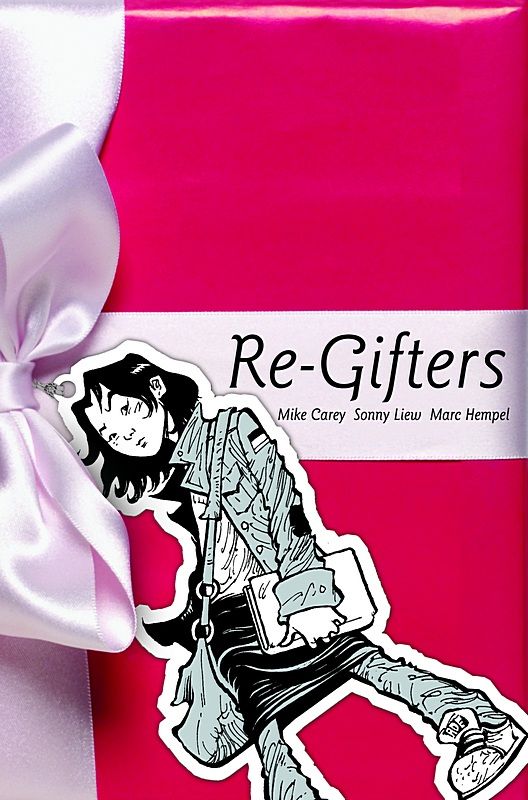I suspect that most of us who are in and around comic books tend to think of them as a very specialized thing, our private preserve. But the truth of the matter is that while we are going blithely along from Wednesday to Wednesday at the comics shop, used to seeing a wall of Marvel, a wall of DC, and maybe a wall of 'other stuff'... there is a whole OTHER community of people who are interacting with the world of comics in a completely different way.
Specifically, they deal with comics not as periodical monthly magazines, but rather as books. Bookstores and libraries are very interested in comics as a way of getting new readers in the door. And it's working.
Librarians and educators, especially, are growing keenly aware of the value of comics as a literacy tool. My own experience teaching reflects this -- fourteen years ago, when I pitched the idea of a kids' comics class to the art studio where I'm on staff, it was viewed as a somewhat nutty experiment and even then they hedged their bets by calling it 'cartooning.' This year I had three different schools asking me to come help them put a comics program together. Never in my wildest dreams would I have imagined that kind of mainstream acceptance -- hell, eagerness -- about incorporating comics into a public school program when I was young. Even a decade ago it seemed like a bit of a reach.
Not today.
Over the last few years, teaching, there have been occasions where I've been partnered with several youth librarians in putting together special events around comics and cartoons at the library, and I'm always impressed with what I see. Believe me, that's a group of people that pays VERY close attention to 'what the kids are reading.' The folks who run the teen programs in the public libraries I've been to are every bit as much educators as any other teacher in a classroom. I've found them to be smart, funny, deeply passionate about literacy and getting young people reading... and they are putting a lot of comics in front of a lot of kids.
Weirdly -- well, it seems weird to me -- the explosion of comics into our public libraries over the last couple of decades is a phenomenon that goes largely unremarked in the mainstream comics press. I hardly ever see anyone in the comics press talk about it, anyway, so I decided that I'd ask a couple of the youth librarians I knew to share their thoughts on the subject.
I asked Jennifer Bisson and Hayden Bass of the Seattle Public Library's Teen Program if they'd mind answering a few questions, and both ladies were very gracious and giving of their time. Here's what they had to say.
How many graphic novels, roughly, do you carry in your library? And does any one particular style or genre predominate?
Hayden: "Well, it depends on what you mean by 'library.' In our library system, we have upwards of 4,500 graphic novel titles, with multiple copies (usually at least 5 or more) of each. Here at the Central Library, we own over 3,500 titles. Manga is hugely popular, as are superhero comics. But so are indie comics, graphic biographies, graphic histories, etc. Pound for pound, comics and graphic novels circulate far more heavily than traditional books do. Our graphic novel collection is heavily browsed, too--for every graphic novel that is checked out, two are probably read right here on Level 3 without ever circulating."
Jennifer adds: "I will check on this with our Collection Services people. My best guess on what Central, alone, owns would be something like eight hundred to a thousand manga books, and at least six to eight hundred other graphic novels. Now, a smaller branch library would have maybe three hundred to four hundred graphic novel and manga titles total, and a larger branch, four to six hundred. We have 26 branches in all and of those I'd say a third are the small branches, the other two-thirds are the larger ones."
And here is the e-mail reply to Jennifer's request from Collection Services.
There really isn't a way to get a definitive number on the graphic novels in the system, but you can get a sense of the size and popularity of the 740 Dewey Decimal classification (which is more than comics/manga/graphic novels, but does include them) when you look at the three separate spreadsheets for Adult Children's and Young Adult Circulation and Holdings by Dewey in the 2006 Horizon reports. I have been keeping a spreadsheet for the past several years of Adult/Teen/Children's Graphic Novel/Manga/Comics series that we have added to the collection. What I'm showing now is approximately 230 series/titles that we are currently receiving and approximately 50 more that have completed in the past few years. As you know, each series generally has multiple volumes and we buy multiple copies of each volume. For the most popular series, I buy 13 (or more if high demand necessitates) copies, the second-tier series I usually buy 8-9, and for some series, particularly adult, I'll buy 5-6. In addition I purchase multiple copies of many single volume works for all age groups that aren't part of a series and that I don't track on my spreadsheet.
I don't have a separate budget for graphic novels. They are charged to the non-fiction budget for whichever collection (adult/teen/children's) they are being purchased for.
Obviously you have limitations of budget and so on. Can you talk a little about those limitations, and what criteria goes in to choosing what you add to a collection? How often do you add books -- is there a set interval like once a year, or a certain time of the year, or is this an ongoing thing? Say a comics publisher wanted to get a library to consider their book. How does that work? Can you walk us through that process?
Hayden: "All of the selection for the Seattle Public Library is done centrally, which means that all of our comics are selected by one individual (who does a fantastic job). Once a year, we Teen Librarians request a list of graphic novels to fill in the gaps we see in our collections. That way we can make sure that we have enough copies (or at least close to enough copies!) of the kinds of materials that are especially popular in our own communities.
"If a publisher contacted me personally with a book that sounded like a good addition, I would send the information along to our collection librarian and ask her to review it. She takes staff requests very seriously, and she would probably purchase the book if she agreed that it looked like a worthwhile collection to the library. Lately the library's budget for graphic novels and manga has expanded along with the expanding readership of these formats."
Are comics or graphic novels increasing interest in reading for teens overall, or do they tend to stay just with the comics and manga? In other words, do comics work as a gateway to reading for young people?
Hayden: "Yes, I think comics absolutely work as 'gateway books' for many children and teens who had previously considered themselves non-readers. Once you're in the habit of turning those pages, it's that much easier to pick up the next book. For instance, I recently spoke with a teacher who told me that one of her students who had always hated reading had ended up reading a graphic novel version of Moby Dick.
"He loved it, and was now working his way through the entire series of graphic classics. He's gaining so much confidence in his abilities as a reader that now he doesn't have the mental block that he used to have when beginning a new title. I hear stories like this all the time, of kids and teens who enter the world of reading through the door of graphic novels."
Jennifer: "All the ones we have are of interest to our teens. Many younger teens and upper-elementary kids read the traditional comics from DC and Marvel but also Bone, Yu-Gi-Oh, and Sailor Moon, mixed in with the one-off graphic novels."
"Many of these are cataloged in the Teen section but seem to be of more interest to the 20, 30, and 40-somethings. I'm thinking of things like Ghost World, East Coast Rising, Goodbye Chunky Rice, and so on.
"However, many older teens do read this kind of thing as well. I would say that the teenagers and adults are using the superhero stuff about equally, but the manga circulation is hugely weighted towards teen use. I do see a slow increase of adult readers using our manga section. Perhaps many of them started with manga in their teens and stay with it as they reach their twenties and thirties.
"One thing that might be helpful to understand is how Seattle Public Library deals with cataloging all these things. The largest collection of manga and graphic novels and so on is cataloged in our Teen section. Of course they are available to everyone to use but they are housed with our other teen materials.
"There is a small but slowly-growing collection of children's stuff -- we get a ton of patron requests for these kind of 'clean' comics and in fact a few librarians keep a running booklist on 'comics for kids.' And then there is the adult stuff like Crumb or Sin City. Almost all the manga is in the Teen section. Most newspaper comic collections are shelved separately by their nonfiction call number: all the Calvin and Hobbes, Peanuts, etc.
"There are a few exceptions like Zits, Boondocks, and Penny Arcade that go in the Teen section. I wish they were all together in the Teen section as it would be easier for our patrons. I think it is done this way because for a long time the newspaper-strip collections were the only kind of thing like this in the library and they were not enough for a separate section."
Hayden adds: "I also think that publishers are catching on. There are some great books out there for children and teens that are not picture books, and not graphic novels, but that do intersperse text and images for a reading experience that is not dissimilar to reading graphic novels. I'm thinking of the excellent The Absolutely True Diaries of a Part-Time Indian by Sherman Alexie and Ellen Forney, or The Invention of Hugo Caberet, by Brian Selzick.
"These books could function as great stepping stones for students who are comfortable with graphic novels, and gaining comfort with traditional books.
"Which is not to say that there is nothing of value in the experience of reading comics and manga themselves--far from it. As you know, there are so many wonderful graphic titles out there on every subject, with beautiful artwork and stunning writing. It's a genre that deserves to be taken seriously, and I do think that's happening, more and more all the time. When the library chose Marjane Satrapi's Persepolis last year as the title for its city-wide 'Seattle Reads' program, I think a lot of people who were previously unfamiliar with the format came to realize just how powerful graphic novels can be."
What would you consider your biggest success story with using graphic novels in your library/teen program?
Hayden: "Well, I'm planning a big comics festival in January--hopefully that will be my biggest success story!
"I think that system-wide, we've really seen how comics, manga, and anime draw teens into the library. Our Summer Reading Program brochure this year had manga-like characters on the front, and from what I could tell it was picked up by more teens than any of our previous brochures."
Jennifer: "It's not confined to a single incident, it's an overall way of using them. First off, I suggest them DAILY to parents and educators as a way to get kids to read more. Whether the kid has learning disabilities, is just a reluctant reader, or simply thinks there is nothing in the world worth reading. Many adults involved with teens are hesitant at first to get a comic book because they want their students or children reading classics. However, they themselves are often not reading classics either.
"I always tell these folks that it doesn't matter what they read, but rather for how long they are reading. Studies show that people need to read for a certain amount of time regardless of the subject matter. I encourage them to try and bring some comics home and see what happens.
"I know that many kids and teenagers get hooked on the exciting storylines and visual storytelling, and they'll read graphic novels or manga when they would never pick up a book otherwise. I bring home tons of stuff for my own eleven-year-old reluctant reader.
"I think that graphic novels as a form have become so sophisticated and interesting that with a little guidance and encouragement from a professional librarian, more and more adults are realizing their value. And on the other hand I know tons of families like my own where everyone reads comics and graphic novels. Parents and kids are checking out different stuff across all genres. Graphic novels cover all kinds of topics, just like regular books. And we are adding them to most of our 'Teen Reads' lists along with the regular fiction and nonfiction books. Check those out here.
"I just remembered one cool incident. One of my 'library groupie' teens was in a World History class, studying Africa. I gave her Deogratias, A Tale of Rwanda.
"This is probably one of the single most disturbing and well-done graphic novels I have ever read. It is so important because it makes the chaos and horror of Rwanda accessible, like Maus did for the World War II Holocaust. It tells a personal, tragic tale of what one individual experienced but it illuminates the whole unbelievable disgusting mess.
"This is very important because teens are so bombarded -- really, we all are -- by constant pulls to our focus, so that it is very hard to feel deeply the tragedies of the world outside our borders. This graphic novel does it better and more succinctly than many things I have read.
"Anyway, the student read it and was wowed as well, and she brought it to her teacher who was ALSO wowed and allowed her to use it for her class project. Now, this girl reads constantly and is very politically aware, so she was not a reluctant reader swayed by the fast story and intense images. She was a discerning reader interacting with another type of reading, and finding value in it. I can't say it made her a comics reader, but she is more open to them now as 'serious' literature, and so is her teacher."
...And what was your biggest disappointment?
Jennifer: "Augh. Just in general, that many adults don't understand the value of these comics for teens. Really, though, it's often simply about educating them, and reminding them that their teen who's now on his or her tenth manga series might be reading a lot more that way than they would be otherwise."
Hayden: "I can't say I've ever really been disappointed when using comics in a program. I think that in the library, our biggest problem is marketing-- letting the comics and manga communities know that we do have these great collections, and that we show free anime movies, etc."
What's one thing publishers could be doing to help you that they're not doing at the moment?
Jennifer: "I don't have any suggestions on this."
Hayden: "I've been surprised on several fronts recently by how much the publishers actually do seem to be responding to demand from audiences beyond the traditional comics audience (which I think is generally stereotyped as youngish white males). For instance, the new Minx line from DC targeted at teen girls is generally excellent; two of my favorite titles from that series, As Good As Lily and The Re-gifters, both have female teen Korean American protagonists.
"I hope they keep that series going, and hopefully draft some more women comics artists and writers to contribute. I bet Ellen Forney could write a fantastic one.
"I'm always looking for more graphic novels (and books, for that matter) about GLBTQ teens, African American teens, Latino teens, etc. I would love it if there were dozens of comics about these groups that weren't 'problem' books about the difficulties of being a member of a minority (though there is certainly a place for those kinds of books), but instead just fun books where being gay, or black, or Latino, or whatever, was simply a fact, rather than a circumstance to be overcome. Whether they were superhero, realistic, science fiction, or just about any other genre of graphic novels, they would be most welcome. As I say, I think the Minx line is a step in the right direction."
***
So there you have it. Thanks again to Jennifer and Hayden for their time and their thoughts. I should add that Hayden's event at the end of January will involve a lot of local talent -- Seattle's a great comics town; we have Fantagraphics based here, after all -- and I'll be talking more about it in this space as we get closer to it. Those of you that are here should check it out.
Those of you that are not in Seattle should look into what's happening at your local library, as well -- because I'm betting there probably is more going on there, comics-wise, than you think.
See you next week.


